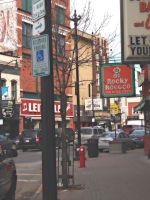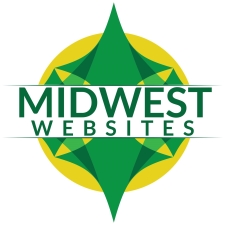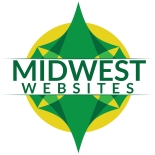
If you’re reading this blog, you’ve probably seen advertising evolve during your lifetime. Just as radio gave way to television, television has slowly been giving way to online streaming and sites like YouTube for a while now. Despite this, there is one thing that has remained consistent from sound waves to viral channels in advertising, even if the form has changed, and that’s branding.
Let’s take a moment to step back to your childhood. Your best friends spent Friday night at your house (or you went to their place), and Saturday morning has arrived. Mom’s making breakfast in the kitchen, and while we wait for pancakes to be ready, we’re sprawled on the furniture and floor of the living room watching Saturday morning cartoons.
Every few minutes, cartoons are interrupted and animated mascots tell us about sugary cereal, the hot new toys TV executives want us to buy, and about places like water parks that have us begging Dad to plan a vacation. While we may not have realized it during our more innocent years, each of these commercials had something in common.
We recognized what the commercial was for at a glance, before it told us.
No, it isn’t because we were especially smart. It isn’t because the name was plastered in big letters on the screen at all times. It isn’t even because most of us spent way too many hours in front of the TV in our formative years (and those of us who did regret NOTHING).
It’s because each company had something that was specific to them, something that made their brand stand out as something we should remember. Perhaps it was a jingle, maybe it was a cast of characters (animated or real), or it could have been the big logo that was a part of every single short getting in the way of our favorite show.
Fast forward back to the present and I’m sure you’re asking what that has to do with you. If you run a business, it might surprise you to learn that everything we just went over plays a tremendous role in your long-term success (or lack thereof).
Building a brand is how you keep yourself in the forethoughts of your current and prospective customers, and you have a lot of opportunities to do so every day. Some of the steps for doing so include:
• Choosing a business name that identifies your profession
• Creating a unique logo that can be recognized at a glance
• Designing a slogan that identifies you in a short sound byte
• Employing the above in your daily interactions
This article is going to be talking about the benefits each of these steps afford your online presence, as that is the primary medium for advertising in today’s day and age. Don’t despair if you’re still using other avenues like commercials, billboards, or mailers – a lot of what we’re talking about is applicable for these and other advertising outlets too.
Jump ahead to:
Your name is the first thing most customers will see; tell them what you offer with it.
My business partner and I spent the better part of a week brainstorming the name for this business when we were getting started. We had a few criteria that needed to be met for it to be considered a successful candidate:
• Shorter is better
• Our name must be easy to remember
• The .com domain had to be available for purchase
• Prospective customers should be able to identify our industry after reading the name
The first two of these criteria went hand in hand. Fewer words = less to remember. When someone finds us through our advertising or hears about us from a friend, the very last thing we want is for them to forget who we are when they finally get in front of their computer to learn more about what we can do for them online. There also needs to be a certain ring to the name as it is recalled – you’ll know it when you hear it for the first time.
Up next was the domain name for our website. While there’s something to be said for other domain extensions than .com, abbreviations for your business name to shorten it, or a clever variation of your business name for your web address, all of these have a critical flaw with our target market – unintuitive guesswork. We don’t want people to guess what our domain is, we want them to find it right away.
The moment something becomes difficult for someone online, the most common reaction is to give up, lower its importance, and walk away. The more business-savvy individuals in that demographic elect to tag in a professional rather than rationalizing away the importance of an online presence, so we want it to be as easy as possible for them to reach out to us.
This requires incorporation of a couple familiar elements. Domains ending in .com are still king in 2018, and are going to be the first extension most people affiliate with websites by default. If someone types our name into Google rather than the address bar, we want every edge for coming up first. Having a domain that matches your business name is a must in this regard.
If you think the latter point seems silly because nobody would do this online, I assure you that you are mistaken. After years working for companies like GoDaddy, there are quite a few people who browse using a search engine rather than their address bar because they don’t know better. This isn’t a knock against them – it’s simply a fact.
If this isn’t as important for your target audience, great! Get clever with your domain and make sure it is extremely prominent in your advertising so people are drawn to that aspect of your ad. Assessing your demographic or target market is one of the most important things you can do when establishing your brand, so if our advice goes against what you know about your customers, defer to your experience.
That said, if the .com for your business is or becomes available, spend the money to buy it. You’ll thank us later – as will the customers who appreciate the obvious answer being the right one.
Speaking of the obvious, that brings us to our last piece of criteria – telling people what we do just by telling them the name of our business. This is a HUGE part of branding for most industries because of the short attention span of an average consumer. Midwest Websites works with websites for Americans in the Midwest.
Shocking, I know. But if you were a Midwesterner looking for a web developer, would you question that you found someone equipped to help with a website if you found us? No? Then our business name is doing a good job establishing our brand.
Your logo should be recognizable to those with the shortest attention spans.

Every business needs a logo. Using fancy fonts and typesetting? Guess what – these are NOT logos. A logo needs visual elements – colors, shapes, images – that come together in a neat presentation at a glance. Clever fonts are often hard to read and just get skimmed over, which translates to failure in both your advertising and branding.
That doesn’t mean you need to be an artistic genius, however. Something as simple as Target’s logo is recognized by virtually everybody because they’ve successfully built their brand around it. Simply seeing it might remind you that you need to pick up groceries, which often translates directly into money for them. This is the power of a good logo, and what yours should strive for.
When was the last time random words on a billboard did that for you?
If you’re being honest with yourself right now, it was probably a long time ago. Why? Because words don’t capture attention by themselves. When you’re driving, your attention to anything not on the road is nearly nonexistent by necessity, and in today’s age of smartphones, social media, and overall instant gratification, this impatience has permeated all aspects of our lives.
An image is designed to grab attention, and once we identify what it is, it has power over us in the moment from a mere glance. The power it holds is entirely dependent on how much effort has gone into your branding and how much you’ve integrated it into your audience’s daily lives.
Branding isn’t just about imagery; sound can also be an effective angle.
While our primary focus in this post is going to be the online angle for building your brand (more on that in the next section), this area is the one that is arguably the most important for commercials. Between network TV, cable, and the millions who tune in to radio during their commutes and errands, sounds can play a big role in building your brand offline as well as online.
Sound in advertising comes in three primary flavors. The first, while optional for many businesses, is also the unsung hero of others – the slogan. A slogan is a short statement that showcases the primary reason for someone to come to you. The Wal-Marts and news stations of the world have been masters of this for decades.
The second is music. Primarily found in upbeat jingles or theme music, this will often frame who a commercial is about before the punchline. This can be especially helpful for associating your brand with a positive vibe, in turn directing a listener to either contact you directly or go online to learn more about you. The latter integrates well with the visual elements of your brand, building recognition on multiple levels.
Your final angle for sound is a rare tool to acquire, but invaluable once you’ve found it – a voice that is specific to your brand. The same person announcing who you are, what you do, and why you are the best solution year in, year out can build a following in itself. If you’re lucky enough to have someone providing this for you, treasure their performance – its making you more money than you might expect.
Now that we have the groundwork, how can your business build a brand?
Unless you have an absurd advertising budget, business branding is a long road that requires constant attention. Fortunately, there are little things you can do once you’ve gotten some of the foundational steps squared away for your business.
Let’s start with your logo. This should be plastered all over anything you manage. This includes, but is not limited to:
• Websites
• Social media
• Invoices
• Email signatures
• Commercials
• Signage
• Receipts
There are opportunities to get your logo in front of people every day, and over time, that can add up to some serious buy in, clout, and rapport – often before you even start an interaction! Each communication you make, whether on Facebook, in response to a contact form on your website, or sending a bill is another chance to strengthen your brand visually.
While we talked about more traditional mediums to employ sound in the last section, there’s plenty of room to employ this angle of your brand online, and the single biggest area of opportunity is on sites like YouTube. Content creation is not an easy field to get into, but is a big deal for companies that take the plunge and learn how to wield this marketing tool to capture their audience.
Using our YouTube channel as an example, I introduce myself at the start of every video, explain what we do, and plug a product or service. This takes maybe 20 seconds. Afterward, I showcase our knowledge by demonstrating how to do something, helping you develop the ability to do it yourself.
By setting our video formula this way, I want it to be clear that we are your partner for success online, a resource you can turn to when you are in need, and a team you can turn to for capable assistance with more complicated online projects. We’re already seeing some positive results from our content, and through consistency, plan to grow our audience exponentially.
Between the visual and audio elements of growing our brand, this is where the simplicity of the business name comes into play. Midwest Websites is an easy name to remember, our logo showcases bright, recognizable colors often affiliated with the Midwest, and our videos focus on tutorials to empower those running websites.
The business name ties all the branding elements together into a neat, straightforward package that is tailored for recognition. Remember – the more complicated you make your branding, the more muddled your message becomes, making it harder to identify at a glance. Don’t make your brand an adversary to your success by getting tricky or changing for the sake of change.
Need to improve your SEO rankings so you can get your brand out there?
You’re in expert hands by working with us. Give us a call at 319-229-5225 or send an email over to design@midwestwebsites.com to arrange an SEO audit. Once we know your current standing, we can tailor an SEO plan that is designed to improve your standing with search engines and maximize areas of opportunity for your success.

Braden is one of the founders of Midwest Websites, and has been professionally writing and developing websites for over 7 years. His blog posts often take an experience from his life and showcase lessons from it to help you maximize online presence for your business.

